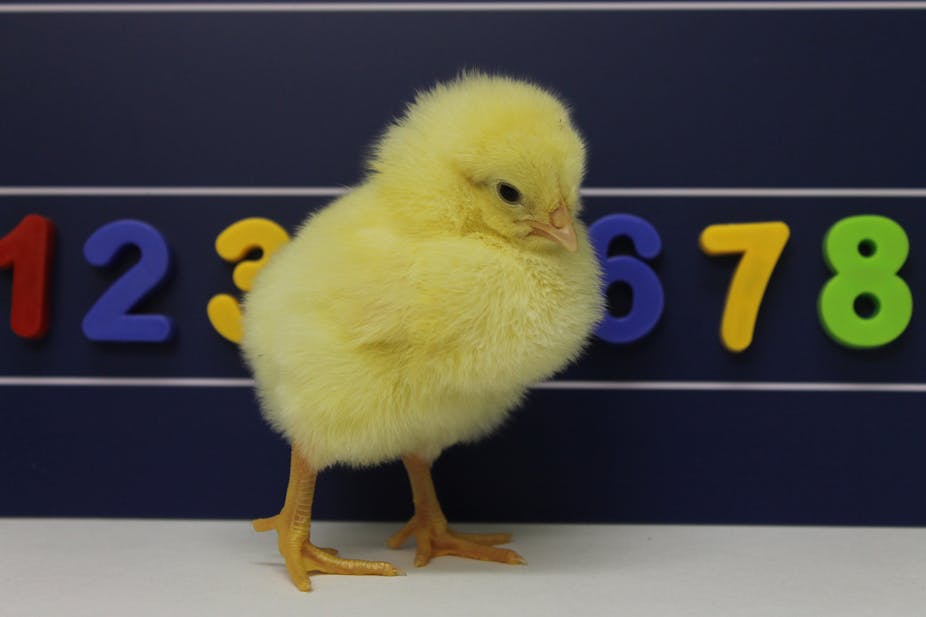Imagine you are asked to mentally arrange the numbers one to nine. Most people will place the numbers along a horizontal line from left to right, so that one is furthest left and nine is furthest right. This mental representation of the spatial organisation of numbers is known as the mental number line, and was first demonstrated by Galton in 1880.
The organisation of the mental number line can be affected by cultural factors, such as reading direction. People who read left to right have a mental number line as described above. However, those educated in languages that are read from right to left, such as Arabic, organise numbers on their mental line the opposite way round and there is no clear pattern in people that can read languages in both directions.
But, interestingly, seven-month old infants – who obviously haven’t learned to read yet – appear to think of numbers in increasing size from left to right, which suggests that the mental number line may not simply be a result of learning. Animals as distinct as birds and primates tend to have a bias towards the left half of their visual field, potentially due to brain lateralisation, where the right half is often the dominant one in many visual tasks. It may be that this bias results in visual information (including numbers) being processed from left to right.
Innate ability?
A study published today in the journal Science by a team from the universities of Padova and Trento in Italy is the first to test whether other animals can also mentally arrange numbers spatially.
First, they trained three-day old domestic chicks to approach a panel painted with five small squares, by placing a waxworm behind the panel. Once the chicks had learnt to associate five squares with a food reward, they were presented with two panels, each showing two squares. The two panels were then placed to the left and right sides of the testing arena.

Imagine that you are a chick, looking for waxworms. Previously, you saw a panel with five squares in the middle of the testing area, and it turned out to be hiding waxworms. Now you see two panels to your left and right, each with two squares. Which side do you approach, given that both sides are identical?
Perhaps chicks reason in a similar way to humans who have been trained to read left-to-right: “I see two small numbers, and small numbers go on the left, so the one on the right might be a mistake… I’ll check the panel on the left.” In the experiment, the birds spontaneously approached the left panel more 70% of the time.
The test was repeated, going from a small training number to a choice between two large numbers – in which case the chicks tended to look behind the right-hand panel. Although it is difficult to know the exact reasoning used, the data certainly show that three-day old chicks associate small numbers with the left space, and large numbers with the right space.
The numbers game
Did the chicks use a simple rule that small numbers should go on the left and large numbers go on the right, or could they account for the relative magnitude of numbers with respect to the target number learned during training?
To test this, a new set of chicks was trained to approach a target panel that had 20 squares on it. When these birds were presented with two panels with eight squares on, they approached the left hand side target. For panels with 32 squares, the chicks approached the right hand side.

This shows that the birds assigned numbers spatially based on the relative magnitude of the number with respect to the target. When the target was five, eight was treated as a larger number and was therefore associated with the right space, but when the target was 20, eight was treated as a smaller number that was associated with the left space.
This study is the first to provide evidence that non-human animals may mentally represent numbers in a manner similar to the human mental number line. This ability also seems robust, as altering the shape, colour or size of the target shapes did not affect the results. While this phenomenon has only been shown in domesticated chicks so far, it may indicate that the spatial mapping of numbers from left to right may be more widespread than originally thought.

